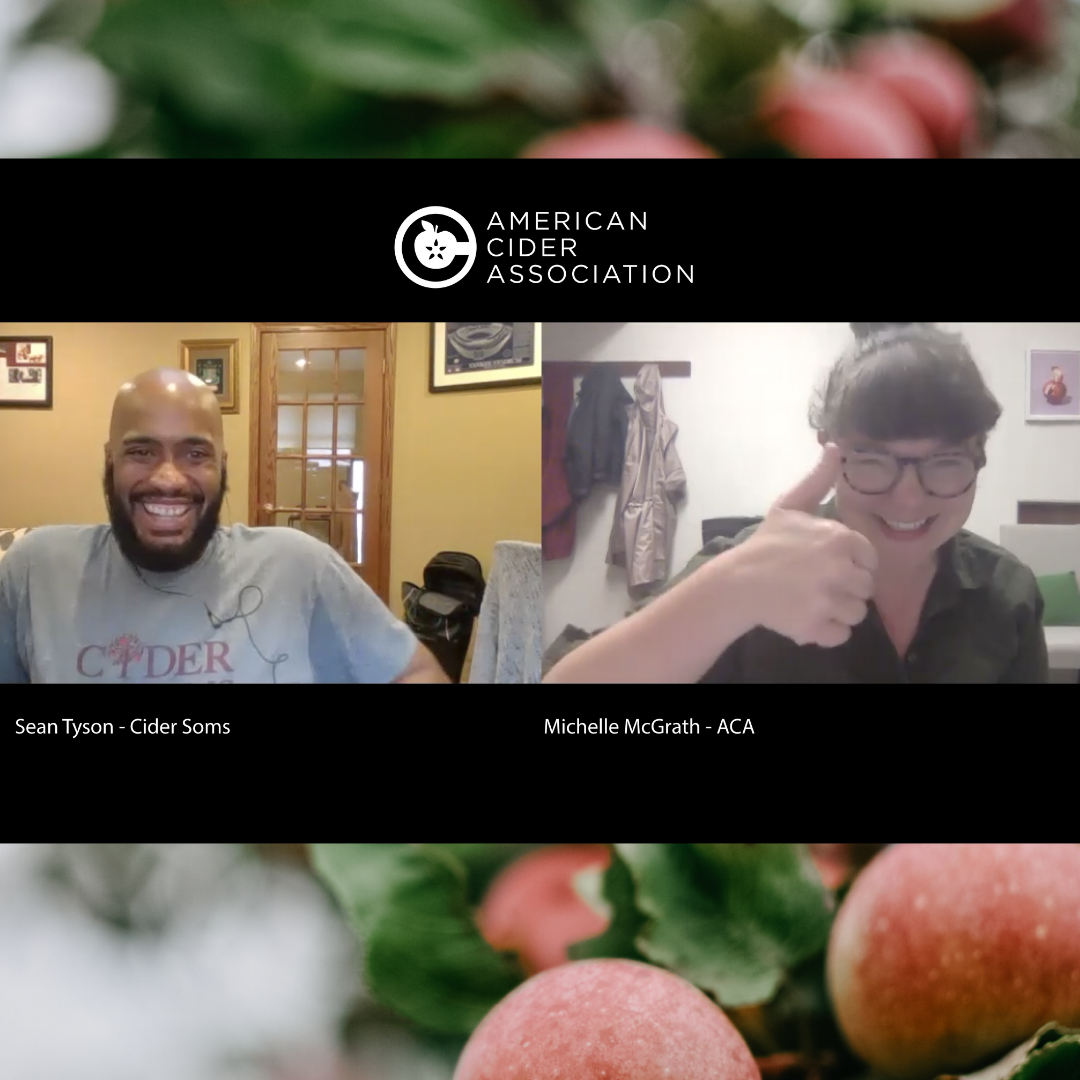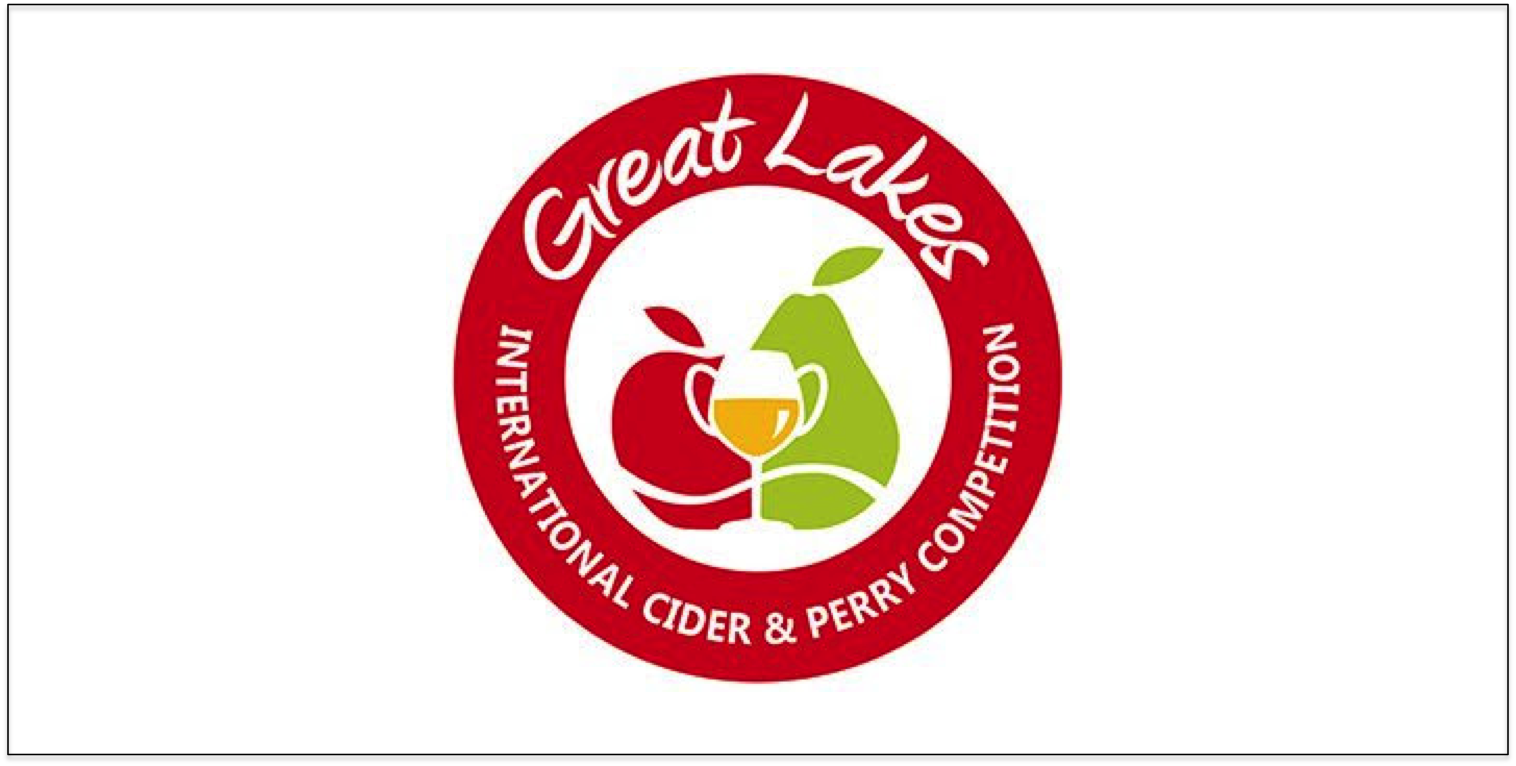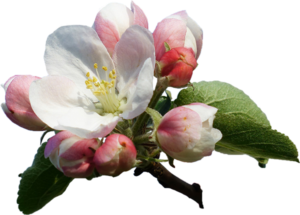Posts by Woodley Smith
Making Safer Cider Communities for All
You’ve probably seen the posts on Instagram or heard rumblings ripple throughout your friend group or community: the craft beer world is in the midst of a true reckoning right now.
Over past few weeks, there has been an immense outpouring of professionals in the industry, publicly sharing stories of gender-based discrimination or violence they’ve experienced in the workplace. These accounts, which range from repeated microaggressions to direct sexual assault, have been eye-opening for many and not so surprising to others.
Gender-based discrimination is relatively common in the US workplace, and in hospitality industries, customers, colleagues and managers can be sources of discriminatory behavior. Did you know that even though sexual harassment and gender-based discrimination are illegal, 42% of women experience gender-based discrimination in the workplace and 72% of incidents go unreported? The shockwaves running throughout the beer industry must serve as a wakeup call to all working in the alcohol sector — and that unequivocally includes the cider industry.
The American Cider Association is 100% committed to ensuring the spaces we hold for the cider community are safe and inclusive. Part of cultivating safe spaces is regularly evaluating what measures are in place to maintain that space and to look for opportunities to improve. We are taking this moment to evaluate our community policies at ACA.
Here are new ways we are striving to help make safer cider communities for all:
- For the past several years, CiderCon has held a code of conduct policy. More recently, we passed a code of conduct for ACA volunteers. But we did not establish a neutral third party to accept code of conduct violation complaints. Moving forward, CiderCon incident reports involving sexual harassment or assault by CiderCon participants and volunteers, ACA board, ACA staff and ACA committee volunteers can be made to WeVow. Other code of conduct complaints related to CiderCon participants and volunteers, ACA board, ACA staff and ACA committee volunteers may be made to the Executive Director or a Board Director. We will share more specific reporting procedures on our website soon.
- As your trade association, we want to provide you with resources to reduce the burdens of doing business. This includes tools to manage your team so that your business may thrive. We have provided members with people management trainings at CiderCon, but none of these trainings specifically addressed sexual harassment policies or other such tools.
We are pleased to share that starting today, ACA members now receive:
- A 30% discount at WeVow through December 31, 2021. WeVow is a subscription-based sexual harassment management program providing tools, policy templates, resources, counseling and incident reporting tools to your business. The packages are affordable and tiered based on business size. With your ACA discount, packages for a small business may be a little as $21/month. The ACA member discount code can be found by logging in to your ACA account and going to our member resources page. This code will expire at the end of the year.
We also wanted to provide a starting point for any members looking to create or strengthen their workplace anti-sexual harassment policies. Consistent messaging, and a transparent chain of accountability is crucial for employees’ safety — blanket statements along the lines of “sexual harassment is not tolerated here” is not as powerful as a clearly worded policy that can be referenced whenever necessary.
Here are five more best practices for cidery owners/managers to combat and prevent sexual harassment:
- Have a sexual harassment policy and a clear protocol on how staff activate compliance concerns, ideally involving a neutral third party to hear complaints.
- Have open conversations with your team to cultivate a culture of no-tolerance for harassment. Some states require annual sexual harassment trainings for all staff.
- Publish pay rates in job postings, which helps to prevent gender-based pay inequity. Also important to note: It is illegal to ban employee conversations about wages.
- Review state labor laws and compare them with your hiring practices.
- Strive for inclusive management. We know from research that diverse teams perform better — this includes, but is not limited to, gender representation.
We are excited to roll out a New Member Resource Library later this year, and plan to provide further resources for managing and supporting your team. If there is a specific resource in this arena that you would like to see, please let us know. Also, if you have suggestions related to the conduct of ACA staff, volunteers and CiderCon attendees, please share them with us.
We are committed to creating a community in which all individuals feel safe, valued and respected and have a sense of belonging. Making lasting changes is going to require an ongoing, intentional effort across our industry. The ACA will continue to improve our strategies around issues of sexual harassment and discrimination. We hope for continued conversation, self-reflection and evaluation from all of our members, so that we can tackle these issues head-on, together.
We look forward to hearing from you.
ACA Board of Directors–Executive Committee
From our Statement of Intent: “We believe that existing structures of power, privilege and discrimination must be actively questioned and evaluated in order to create equitable opportunities in an environment that embraces and values our differences. We will strive to create events, opportunities and organizational policies that embody these values, and to continue evaluating these practices for sustained growth and improvement.”
CCP On Demand Now Available!
We are thrilled to announce that our introductory level Certified Cider Professional program is growing! CCP Level 1 training is now available online for the first time. Starting now, you can order the new Level 1 certification bundle.
Pricing
The Level 1 bundle is $99 for non-ACA members, $75 for members. The bundle includes:
- Detailed, updated study guide
- On-demand online training webinar (1.5 hours)
- Level 1 exam (2 attempts)
Test & Test Prep
The training and exam cover cider-specific facts in these key areas: (1) Apples, the orchard & history (2) Cider making (3) Evaluation (4) Families & Flavor (5) Keeping & serving (6) Food & cider (7) Social Responsibility. The closed-book exam has 60 multiple choice questions. The training materials include an updated, detailed study guide and a 1.5 hour webinar. Careful review of the study guide and webinar should prepare you to pass the exam!
Who Should Become a CCP?
First and foremost, if you sell cider, this program is for you. If you write about alcohol or food, this program is for you. If you just really love drinking cider, this program is for you. Maybe you run a beer-focused bottle shop with a cider section and want to learn more about cider? Maybe you hope to prove to your community’s cider drinkers that your shop knows its fermented apples? Maybe you are a sommelier or beverage director and want to be able to chat more about cider with customers? Maybe you are a distributor that wants to better understand the diversity and range of the cider category?
We target the front line of cider sales as our primary audience for CCP, but anybody is welcome to take the test. There is no pre-requisite for the Level 1 exam.
Meet Our New Team Member
We are also excited to announce that Jennie Dorsey has joined ACA as our part time Cider Education Outreach Manager. If you have questions about CCP, please do connect with Jennie!
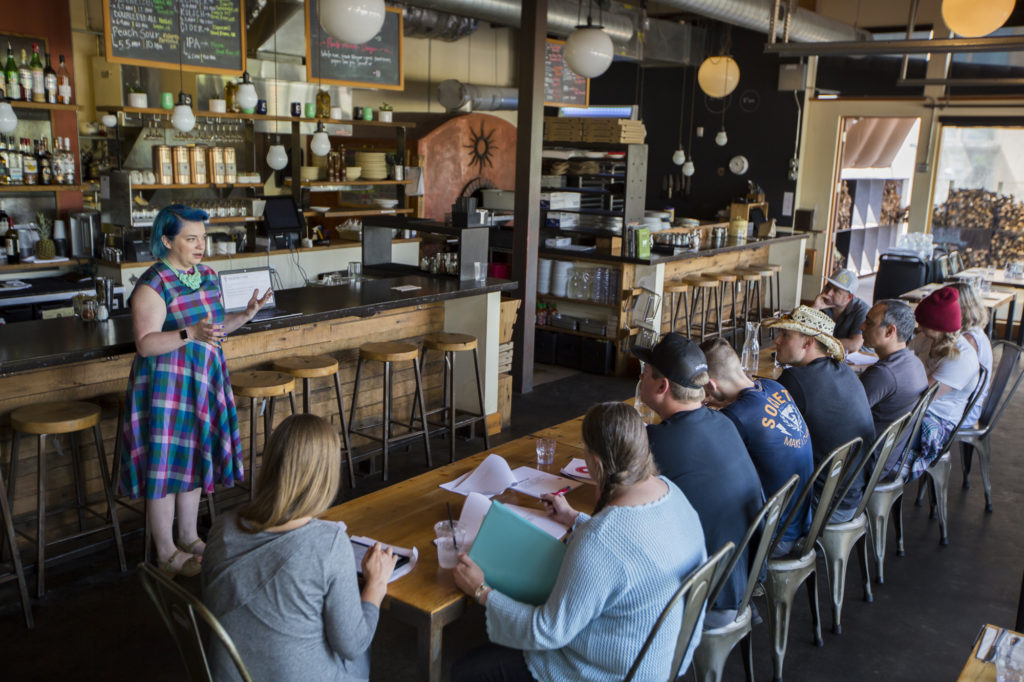
Sponsors
Thank you to our 2021 CCP presenting sponsor, Petainer, and to our summer training sponsor, Arryved!

DEADLINE EXTENDED! Volunteer on ACA Committees!
UPDATE: Application deadline extended until June 1, 2021 at 12:00pm Pacific Time!
As a small membership-funded nonprofit, our work is powered by the grassroots cider community. We are blessed to work with passionate and talented people like you that help us grow and support a thriving cider category. Maybe you would like to consider joining a committee?
ACA’s current commitees include:
- Government Affairs
- Education
- Data Insights
- Marketing & Resource Development
- CiderCon
- Antiracism, Equity & Inclusion
Commitment: Committee commitments are two years, except for the CiderCon committee, which is just one year. Committee members are 100% volunteer positions.
Service Expectations: We’ve put together this handbook to detail what the committee experience is. Please read through the handbook if you think you might want to apply for committee membership.
How to Apply: Click here to apply to join a committee. Applications are due on June 1 by 12:00pm Pacific Time. Questions? Don’t hesitate to reach out.
Hear from ACA member Sean Tyson of Cider Soms, a volunteer on the Antiracism, Equity, and Inclusion Committee, about what it’s like to serve on an ACA committee by clicking on the picture below.
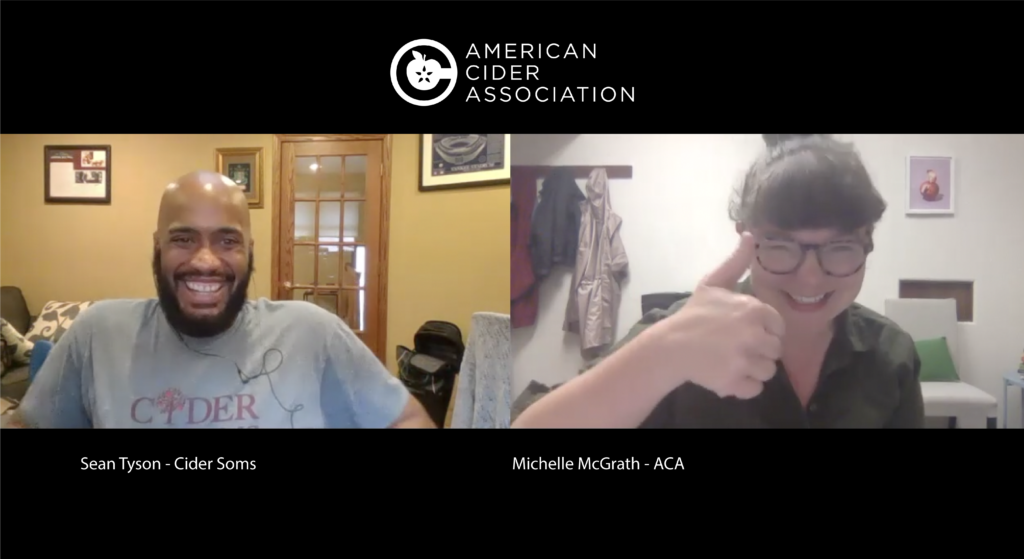
Fermentis Webinars for Cidermakers
Fermentis has a free webinar for cidermakers. You can check it out below and find links to register. Each webinar has two sessions, one for commercial cidermakers and one for home cidermakers, however, anyone is welcome to attend either session.
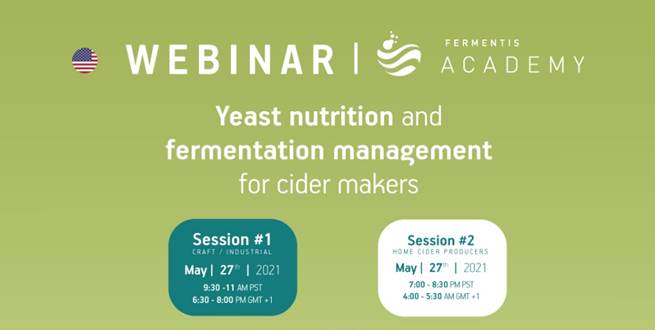
Volunteer on ACA Committees!
UPDATE: Application deadline extended until June 1, 2021 at 12:00pm Pacific Time!
As a small membership-funded nonprofit, our work is powered by the grassroots cider community. We are blessed to work with passionate and talented people like you that help us grow and support a thriving cider category. Maybe you would like to consider joining a committee?
ACA’s current commitees include:
- Government Affairs
- Education
- Data Insights
- Marketing & Resource Development
- CiderCon
- Antiracism, Equity & Inclusion
Commitment: Committee commitments are two years, except for the CiderCon committee, which is just one year. Committee members are 100% volunteer positions.
Service Expectations: We’ve put together this handbook to detail what the committee experience is. Please read through the handbook if you think you might want to apply for committee membership.
How to Apply: Click here to apply to join a committee. Applications are due on June 1 by 12:00pm Pacific Time. Questions? Don’t hesitate to reach out.
Hear from ACA member Sean Tyson of CiderSoms, a volunteer on the Antiracism, Equity, and Inclusion Committee, about what it’s like to serve on an ACA committee by clicking on the picture below.

GLINTCAP – What You Need to Know
Please read below for the latest updates on GLINTCAP 2021 from competition director Eric West including tentative scheduling for 2021 and how to submit your entries.
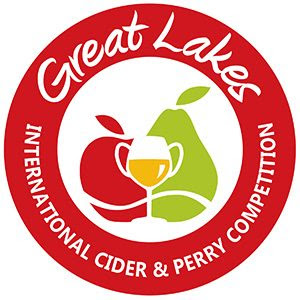
Based on what is currently known about the pace of the COVID-19 vaccine rollout in the US, the 15th Annual Great Lakes International Cider and Perry Competition (GLINTCAP) will be rescheduled for late July to early August. This postponement will ensure the safety of our judges, stewards, and staff, and allow the judging to be held as normally as possible.
When the rescheduled event dates are confirmed with the venue, we will make an official announcement via email and social media. Until then, we ask that potential volunteers not commit to specific travel plans.
Entry registration for the 2021 event is open from now until Friday July 2nd at https://glintcap.org/register/. Entry fees are frozen at their 2020 levels: $75 per Commercial Division entry and $22.50 per Noncommercial Division entry. There will be no Early Registration window or Late Registration window for 2021.
There is no limit to the number of entries you may register in 2021, and you may register additional entries until registration closes on Friday July 2nd, simply by submitting a new entry form. You may not, however, enter the same product into multiple style categories. Visit https://glintcap.org/rules/ for a complete list of rules and regulations.
Samples must arrive at a designated collection point no later than Friday July 16th. Collection points in the United States (Vander Mill) and Canada (Twin Pines) remain the same as in recent years. Visit https://glintcap.org/shipping/ for complete details.
Entrants who registered in 2020 can make changes to their entries at no cost by emailing me (eric@ciderguide.com) between now and Friday July 2nd. These changes include swapping out one cider/perry for another, or editing details for an existing entry such as apple/pear varieties and ABV. Search your email account for the subject “GLINTCAP 2020 Entry Confirmation” for a record of what you have previously entered.
If you already shipped your samples in 2020 and wish to send fresher samples for the July 2021 event, we are offering a $20 refund per Commercial Division entry and a $10 refund per Noncommercial Division entry to offset your costs. Please email me (eric@ciderguide.com) to confirm whether you intend to send new samples for the July 2021 event.
We are now accepting judge applications for this year’s competition. There are also volunteer opportunities available for stewards, who pour samples for judges and help organize paperwork. Please visit https://glintcap.org/volunteer/ and complete the questionnaire if interested. If you registered to volunteer in 2020, please email me (eric@ciderguide.com) to confirm whether you intend to participate in the 2021 event.
We appreciate your understanding of yet another postponement. We will reach out again when the rescheduled dates for the judging are confirmed, and will notify you of any changes that may impact the timing or format of the 2021 event.
Eric West
Competition Director
Cornell Cider Supply Chain Survey
David Zakalik, a grad student under Greg Peck, has developed a survey to assess cider supply chains across North America. He is asking for the help of ACA members to take the survey to create a larger base from which to glean information. Please read below for the description of the survey from David and to find the link to the survey form.
The Peck Lab Group at Cornell University has been collecting data from cidermakers across North America about apple supply, what varieties folks are fermenting/growing, and how apple supply affects cider style. We’re doing one final push for responses (180 and counting so far) from all sizes and styles of commercial cideries. We would greatly appreciate your participation to help us understand how what we’re researching affects the cider industry.
The more responses, the more representative the results will be of the industry as a whole. If you’d like your cidery’s needs to be heard by researchers, please take a few minutes to fill out this Google Questionnaire. All info will be anonymized; a report will be coming out later this year. Responses will be accepted through May 15th.
Please direct any questions to David Zakalik at dlz27@cornell.edu. Thanks in advance!
Restaurant Revitalization Fund Webinar Now Available!
The recording of the Restaurant Revitalizaiton Fund (RRF) Webinar with the U.S. Small Business Association that took place on April 21, 2021 is now available to American Cider Associations members.
For more information regarding the Restaurant Revitalization Fund, check out our blog post!
Restaurant Revitalization Fund Webinar Recording
This content is for members only.
If you were a member and are now seeing this message, please Renew your membership to continue.
Restaurant Revitalization Fund Webinar with SBA
This content is for members only.
If you were a member and are now seeing this message, please Renew your membership to continue.



